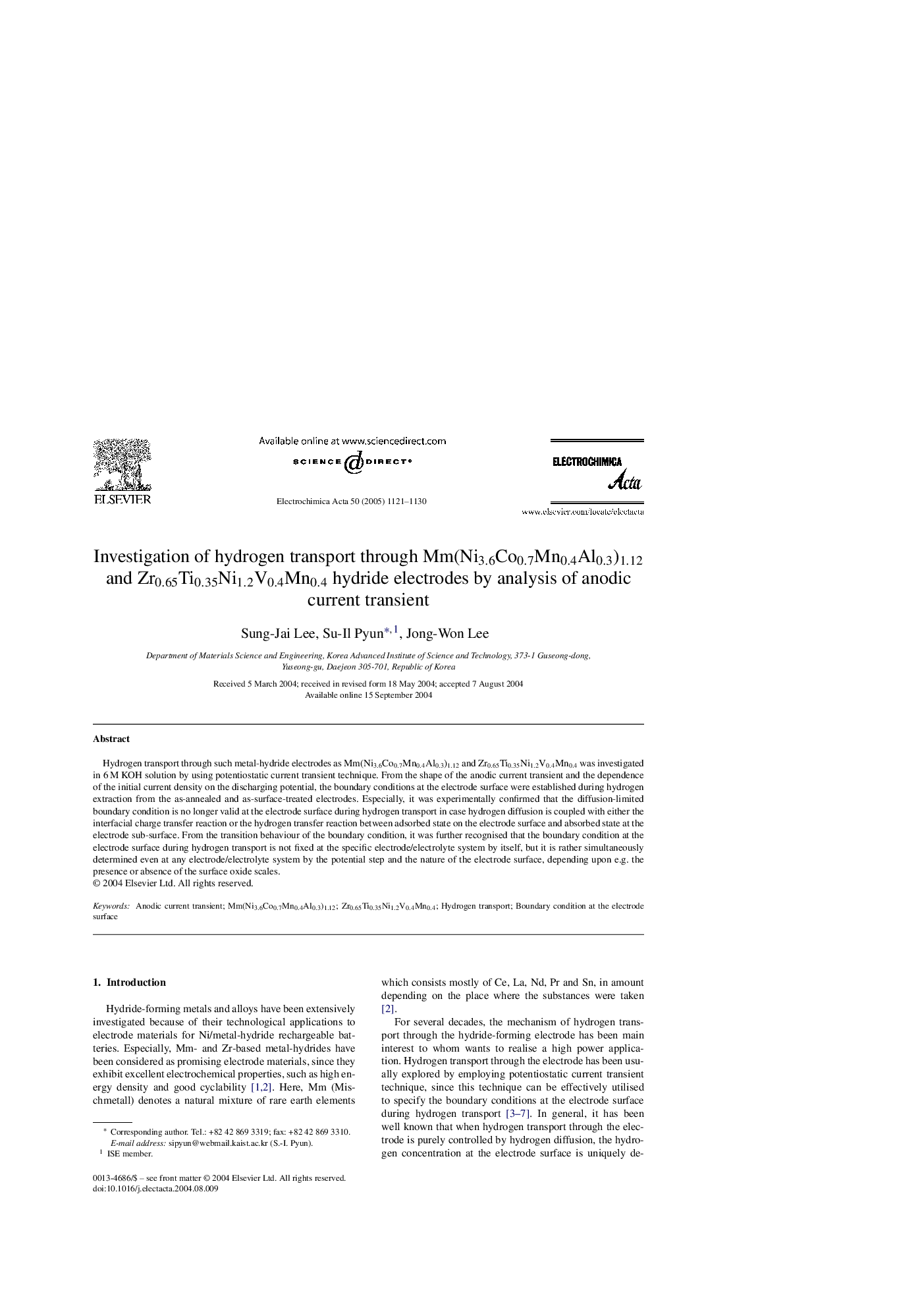| Article ID | Journal | Published Year | Pages | File Type |
|---|---|---|---|---|
| 10269617 | Electrochimica Acta | 2005 | 10 Pages |
Abstract
Hydrogen transport through such metal-hydride electrodes as Mm(Ni3.6Co0.7Mn0.4Al0.3)1.12 and Zr0.65Ti0.35Ni1.2V0.4Mn0.4 was investigated in 6Â M KOH solution by using potentiostatic current transient technique. From the shape of the anodic current transient and the dependence of the initial current density on the discharging potential, the boundary conditions at the electrode surface were established during hydrogen extraction from the as-annealed and as-surface-treated electrodes. Especially, it was experimentally confirmed that the diffusion-limited boundary condition is no longer valid at the electrode surface during hydrogen transport in case hydrogen diffusion is coupled with either the interfacial charge transfer reaction or the hydrogen transfer reaction between adsorbed state on the electrode surface and absorbed state at the electrode sub-surface. From the transition behaviour of the boundary condition, it was further recognised that the boundary condition at the electrode surface during hydrogen transport is not fixed at the specific electrode/electrolyte system by itself, but it is rather simultaneously determined even at any electrode/electrolyte system by the potential step and the nature of the electrode surface, depending upon e.g. the presence or absence of the surface oxide scales.
Keywords
Related Topics
Physical Sciences and Engineering
Chemical Engineering
Chemical Engineering (General)
Authors
Sung-Jai Lee, Su-Il Pyun, Jong-Won Lee,
